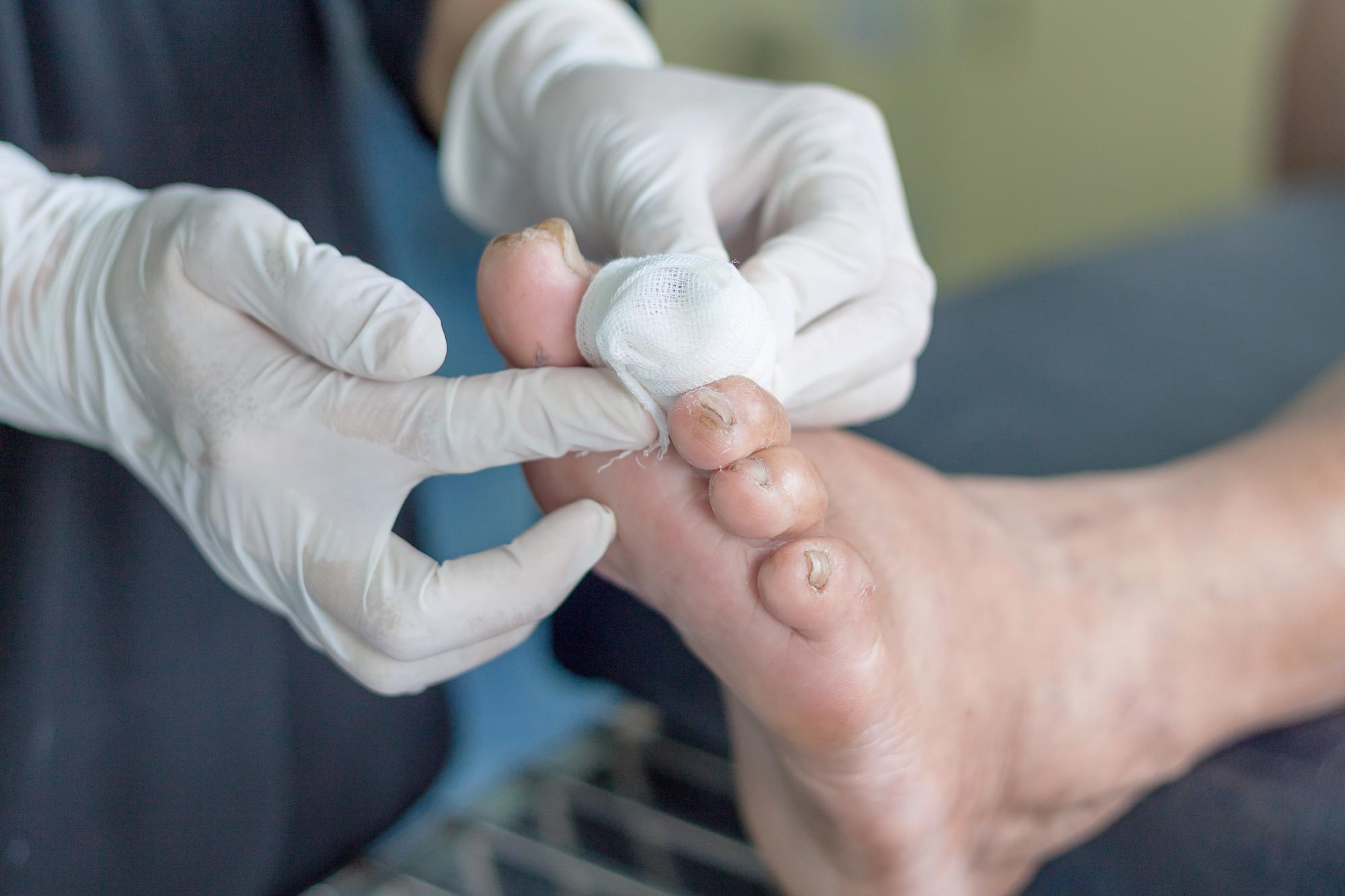Over a quarter of American older adults suffer from diabetes, a chronic disease which can trigger a variety of issues. It is estimated that 10 to 15% diabetics suffer from leg or foot ulcers. These seemingly innocuous wounds, if left unattended, may escalate to a point where diabetic foot amputation becomes an unfortunate reality. In fact, over 80 percent of all amputations stem from foot ulcers, underscoring the need for a rigorous prevention and care.
Management of diabetes is a complex issue that requires a multifaceted approach that goes beyond glucose control. Foot care is an essential element of this approach and serves as a major defense against the looming threats of amputations due to diabetes.

Understanding the Landscape
The world of diabetes and its complications is a complicated one. The prevalence of foot and leg ulcers among people with diabetes highlights the need for greater awareness and proactive care. With these stark statistics, it becomes clear that the best way to avoid amputations is to create a better understanding.
The Amputation Conundrum
Amputation is a looming possibility for those with diabetes. This is a real-life experience that goes beyond the statistics. It’s a long way to go from a minor ailment up to the possibility that you may need amputation because of diabetes.
Daily foot care: A shield Against Amputation
Regular foot care is the foundation for diabetic amputation prevention measures. This routine of daily living is not just about hygiene, but a practice that identifies and treats potential issues before they become dangerous. From examining the feet for any wounds, to ensuring that the feet are properly moisturized, each stage of this daily routine is an important step in the battle against diabetes-related amputations.
Vascular specialists: their role
Although vascular specialists aren’t involved in the treatment of diabetes, they may be a key factor in managing its complications. Making sure that the blood flow is optimal to the lower extremities is an important element of care that aims at easing discomfort in the legs and helping to heal wounds. The purpose of this cooperative method is to avoid Amputations due to diabetes by minimizing its consequences.
Strategies for Preventing Amputation
Navigating the labyrinth of diabetes amputation risks requires a mixture of vigilance, awareness, and skilled intervention. Adopting a proactive approach is vital for those suffering from diabetes. Regular checkups with healthcare professionals such as vascular specialists can assist in detecting early signs of diabetes and intervene.
Understanding the Triggers: Leg Ulcers, and Beyond
Leg ulcers are often the precursors of more serious problems. They require care and knowledge. Understanding the triggers that contribute to the development of ulcers in the legs is an important step. It doesn’t matter if it’s poor circulation, neuropathy or a combination of factors, identifying the root causes allows for targeted intervention and personalized care.
Education as empowerment
It is vital to educate patients with diabetes about the risk of developing the disease and how to prevent these risks. The educational initiatives, in both healthcare institutions and within the community, can bridge the gap between knowledge and taking action. Being aware of the potential consequences of seemingly minor injuries could result in timely interventions and may even avoid the need for diabetic feet amputation.
Private Battles, Collective Triumphs
It’s not merely an individual battle, but an enthralling collective effort to fight diabetic-related amputations. Joining support networks, whether it’s through health professionals or group groups in the community, is a valuable space for sharing stories, experiences, and coping strategies. Amputations can be emotionally draining. The feeling of belonging can help you get support and feel at ease.
In conclusion, the journey through leg ulcers, diabetes and the ever-present danger of an amputation are multifaceted. A regular foot check-up is the initial step to protect yourself. Vascular experts’ experience is a great asset to mitigate the effects. Through promoting awareness, adopting preventive measures, as well as fostering an overall support system, people with diabetes can navigate this intricate landscape with resilience and optimism, while reducing the shadow of amputation risks.